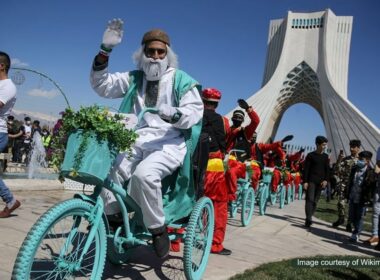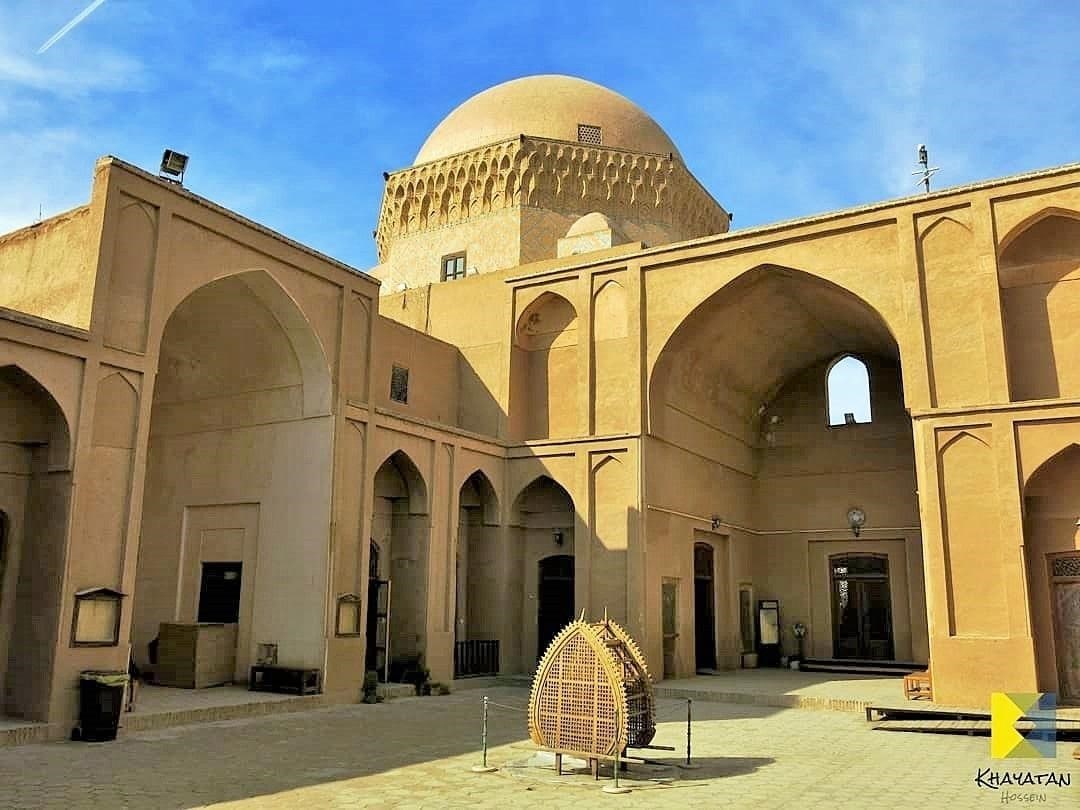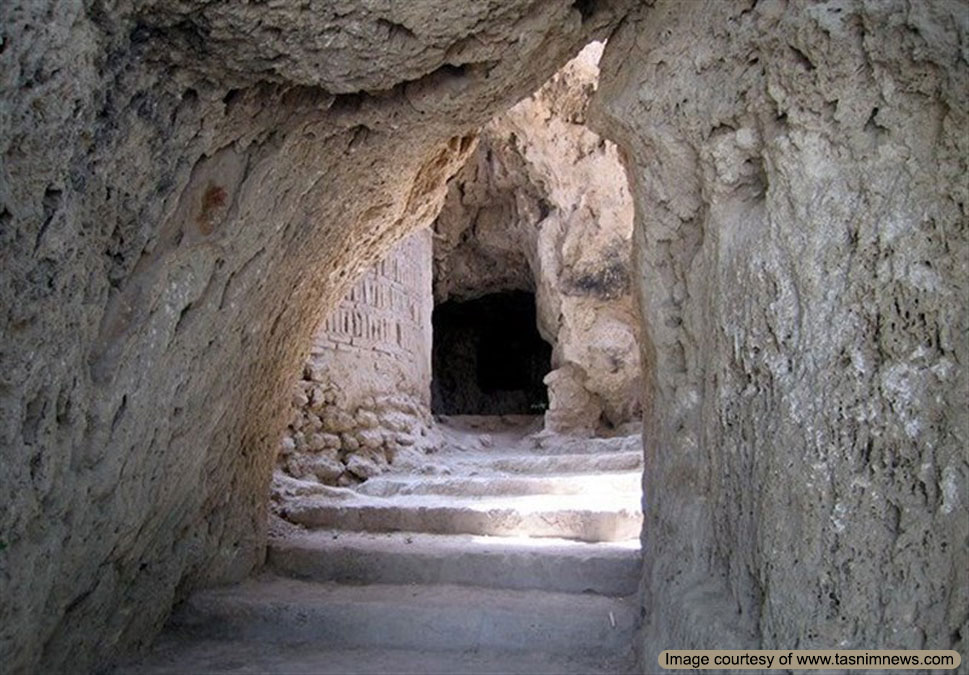
Niasar (Niyasar) is one of the beautiful cities filled with natural attractions in Kashan, Isfahan province. This beautiful city is located at the foothills of the Shahin Peak and the Karkas mountain range, featuring several historical monuments and tourist attractions. One of the beautiful attractions in Niasar is the man-made Rais Cave of Niasar. Other names of this cave are Niyasar Cave, Veys and Talar Cave (Hall Cave).
The Urban Architectural Style in Niasar City and the Architecture of Rais Cave
There are 4 dominant Iranian Architecture styles present in Niasar City that we will describe below:
- Ritual Space Architecture: Rais Cave is an unique example of this style of architecture.
- Ancient Architecture: The Chahar Taq (Four-Arch) buildings in the city fall into this category.
- Post-Islamic Architecture: It includes the architectures of the Safavid, Zand, and Qajar periods.
- Contemporary Architecture: It includes buildings and monuments constructed since the beginning of first Pahlavi period until today.
As mentioned, the architectural style of Rais Cave is ritual space architecture. The construction of this cave dates back to the Parthian period, when it was established by the followers of the Mithraism religion. It is said that during this period, the temples were in total darkness to emphasize the significance of light (the focus of Mithraism beliefs). This historical cave was a religious monument built for performing ritual ceremonies, and it seems that it was used as a place to worship Mehr by Mithraists.
Architectural Features of Niasar Cave
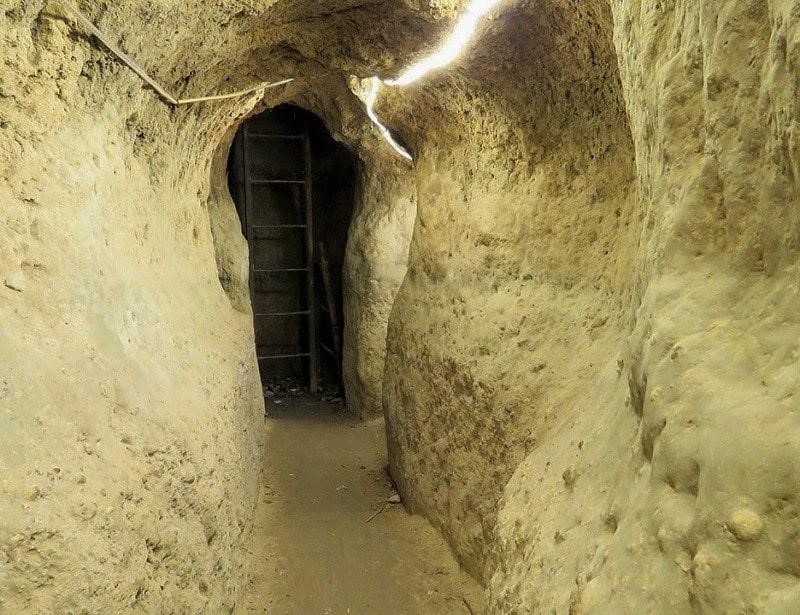
The cave opening is about 5.3 meters wide and 5.2 meters tall, and it is facing north. There is a small hall measuring 3 x 8 meters at the beginning of the cave. There is also a small opening measuring 50 x 50 centimeters at the end of this hall. This hole in the wall is the entrance to Rais Cave, which is dug into a large rock.
This cave consists of three floors and two annular horizontal canals. The total length of the cave is about 780 meters which includes a network of long and narrow tunnels and corridors.
The cave corridors stretch about 250 meters with a very small width of about one meter. The annular and horizontal cave canals have unique architectural features, which are mentioned below:
- Annular Canal: This canal features two entrances and 7 rooms dug into the depths of the mountain. The lower rooms can be accessed through underground corridors. The entrances to the canal are located at 1079 and 1081 meters above the ground.
- Horizontal Canal: It has four entrances and a long corridor with a slight incline. The main entrances to this canal are located 1780 meters above the ground. The other entrance is located at an altitude of 1109 meters, and reaches a beautiful garden featuring several at its center.
There are 20 rooms in this cave. The area of the largest one is 28.6 square meters while the area of the smallest room is 1.8 square meters.
One of the unique features of Rais Cave is the surprising air quality in all its areas. The inclusion of several entrances means that there is adequate ventilation in the cave. Therefore, even in its deepest areas are well ventilated.
In addition to that, there are a total of 45 watering wells in Rais Cave, which connect to each other at different levels. The deepest well in the cave extends down about 10 meters.
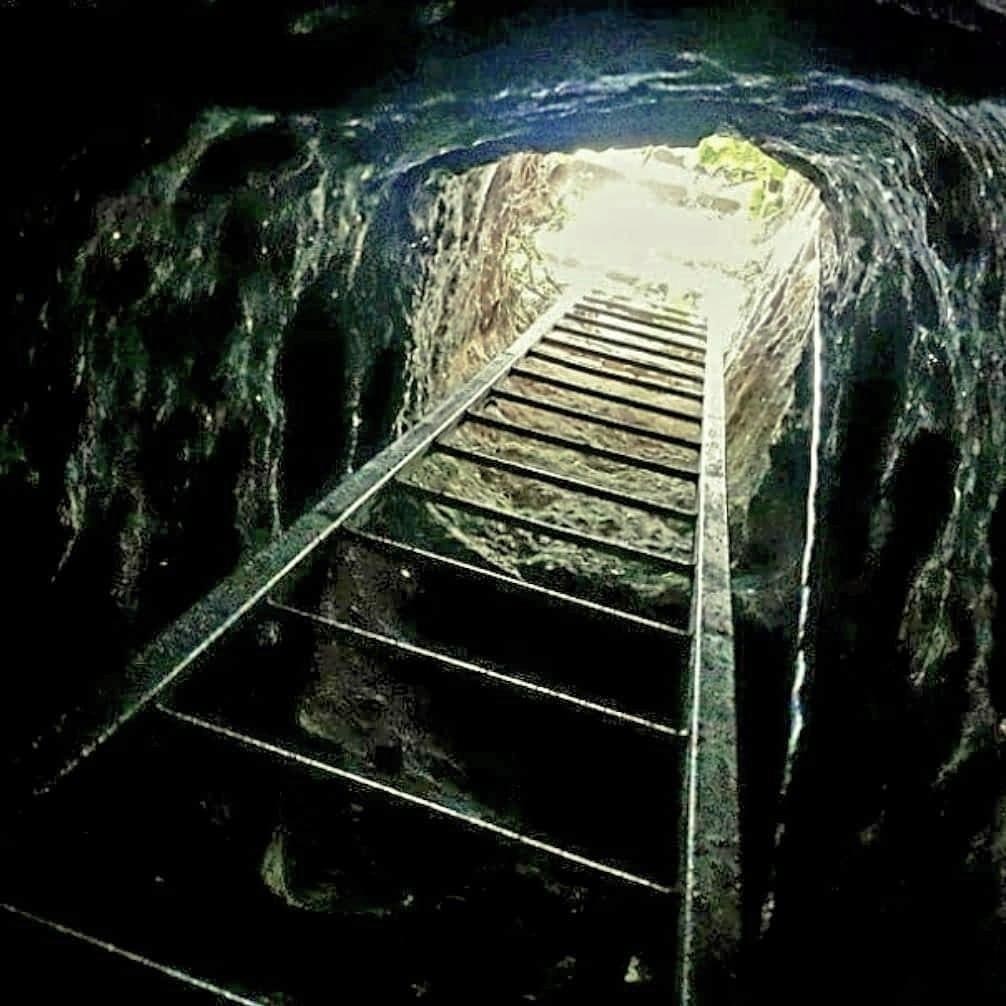
Historical Artifacts Discovered in Rais Cave
Many historical artifacts have been discovered inside the Rais cave, and we will describe the most significant examples of archeological discoveries in Niasar Cave:
Pottery from the Parthian and Sassanid periods: Traces of pottery from the Parthian and Sassanid periods have been found inside the cave. Most of the artifacts date back to the Sassanid era. Therefore, it can be assumed that this cave had special significance during the Sassanid period.
Artifacts from the post-Islamic era: Artifacts such as pottery and coins from the Ilkhanid and Seljuk periods have been discovered in different areas of the cave. During this period, the Rais Cave had a different function and was mainly used as a shelter and for military purposes.
A stone statue of a ram’s head: This statue dates back to the Sassanid period, and confirms that followers of religions such as Mithraism had visited the cave. Sacrifice rituals next to flowing water is one of the ceremonies practiced by the followers of this ancient Iranian religion. Therefore, it seems that this statue was left behind after the sacrifice ceremony.
Visit the Mysterious Rais Cave of Niasar
Rais Cave is one of the unique historical attractions of Niyaser City. Some parts of the cave are very small, and you may have to crouch or crawl to pass through them.
If you travel to Niasar Kashan on an Iran tour package or personally, do not miss visiting this historical cave. Destination Iran invites you to visit Rais Cave in Niaser city and other stunning Kashan tourist attractions.
Where is the Rais Cave of Niasar?
Raees Cave is located 50 kilometers west of Kashan, at the foothills of the Shahin Peak in the Karkas mountain range in the heights of Niaser. You can see the exact location of this cave below:
Frequently Asked Questions About Rais Cave
If you can not find the answer to your questions in the following, share your questions with us through the comments section of this post. We will answer them as soon as possible.
What was the function of Rais Cave of Niasar?
Some researchers believe that this cave was built for the purpose of ritual religious ceremonies and, and that initially, it was not used for military or residential purposes. There is enough evidence that the construction of this cave was a religious endeavor at first, and it was used for other purposes in later periods. Coins and pottery discovered in this cave dating back to post-Islamic period suggest that this cave was used for military purposes during the Seljuk and Ilkhanid periods.
What is the architectural style of Niasar Cave?
The architectural style of Rais Cave is ritual space architecture and its construction is attributed to the followers of Mithra in the Parthian period.
What are the architectural features of Rais cave of Niasar?
Rais cave consists of three floors and two annular and horizontal canals. The total length of the cave is about 780 meters, including long and narrow tunnels and corridors. The cave has 20 rooms, the area of the largest one is 28.6 square meters and the smallest is 1.8 square meters. Several entrances to the cave ensure adequate ventilation of fresh air to all areas of the cave. The cave features 45 wells interconnected at different levels. The deepest well in the cave is about 10 meters deep.
What are the historical artifacts discovered in Niasar Cave?
The artifacts discovered in Rais Niaser cave include: pottery from the Parthian and Sassanid periods, dishware and coins from the Ilkhanid and Seljuk periods, and a stone statue of a ram’s head from the Sassanid period.
What are the other interesting tourist attractions near Rais cave in Niasar?
Niasar Waterfall and Bagh Talar Garden are the two main tourist attractions in Niyasar near Rais cave.
When is the best time to visit Rais Cave of Niasar?
The best time to visit this historical attraction is from spring to early autumn.



